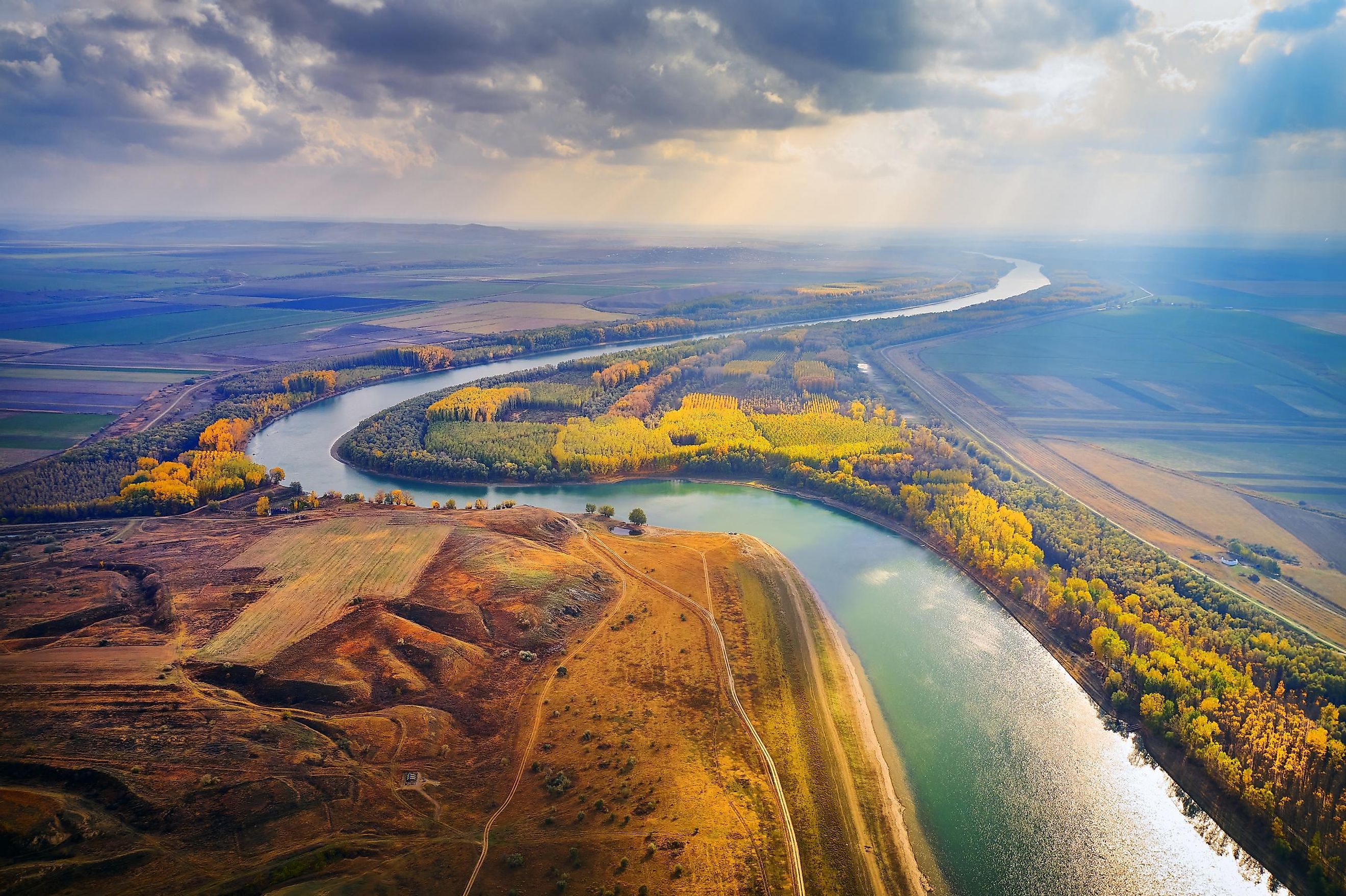
10 Longest Rivers In Europe
Rivers are the lifeblood of just about any civilization, and there is no better example of this than Europe. Despite its relatively small size, Europe is home to an intricate series of rivers and waterways. Each of these brings the continent the opportunity to trade and travel with the outside world. While every river has some positive benefit to those who live nearby, it is the biggest ones that leave the most significant impact and can even shape the destiny of nations.
- Volga River
- Danube River
- Ural River
- Dnieper River
- Don River
- Pechora River
- Kama River
- Oka River
- Belaya River
- Dniester River
1. Volga River - 2,194 miles
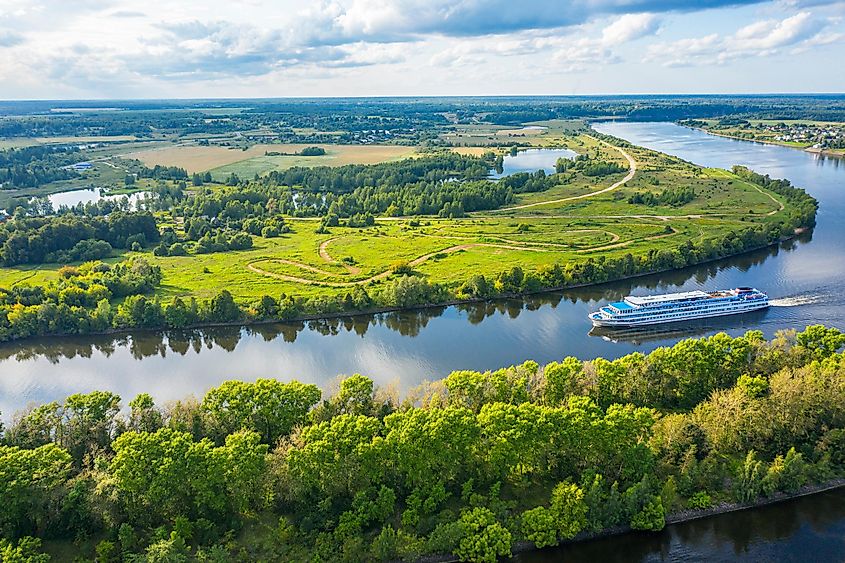
The longest river in all of Europe can be found in the heart of Russia, where it is the country's national river. The lengthy Volga River begins in the Valdai Hills near Moscow and flows south until it drains out into the Caspian Sea, covering a catchment area of 530,000 square miles (1,360,000 km2). The Volga River is largely fed by snow and other precipitation that forms in the Valdai Hills, which makes it a particularly cold and unwelcoming river to swimmers and other water sports enthusiasts. This mighty stretch of water is filled with a series of dams and reservoirs. Each of these stations plays a crucial part in powering the nearby towns and cities that inhabit its shores, including four of Russia's ten largest cities. The Volga and its many small subsidiaries are essential to the Russian economy.
2. Danube River – 1,777 miles
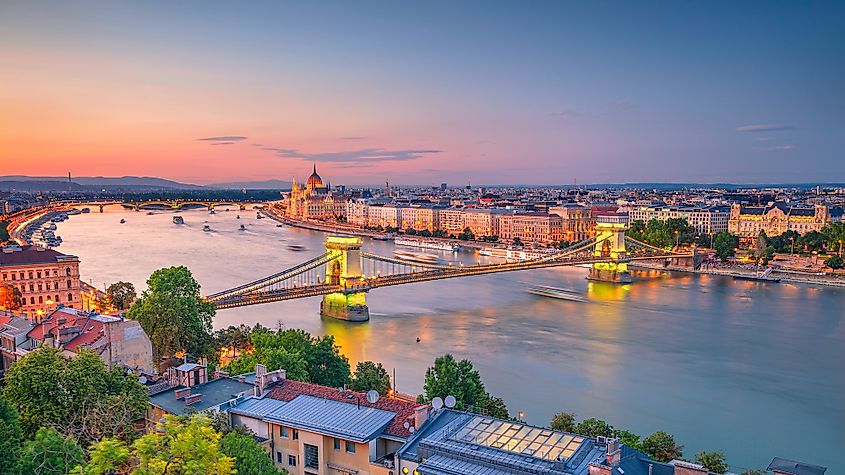
Called by many different names by the nations that stand in its path, the Danube River is perhaps one of the most important rivers in the world. Acting as a center of trade and transportation for nearly a dozen nations in Central Europe, the Danube has been the lifeblood of the continent for centuries.
Starting in the high mountains of Germany, the Danube River flows across Austria, Slovakia, Hungary, Croatia, Serbia, Bulgaria, Romania, Ukraine, and Moldova until it finally empties into the Black Sea. Its basin covers a massive area of 309,447 square miles (801,463 km2) and is home to a rich diversity of fish species like zander, tench, carp, sturgeon, trout,
With so many nations having access to its waterways, it is no wonder why the Danube still experiences some of the highest commercial traffic in the world. The amount of money this river generates in trade annually is estimated to be in the tens of billions.
3. Ural River – 1,509 miles
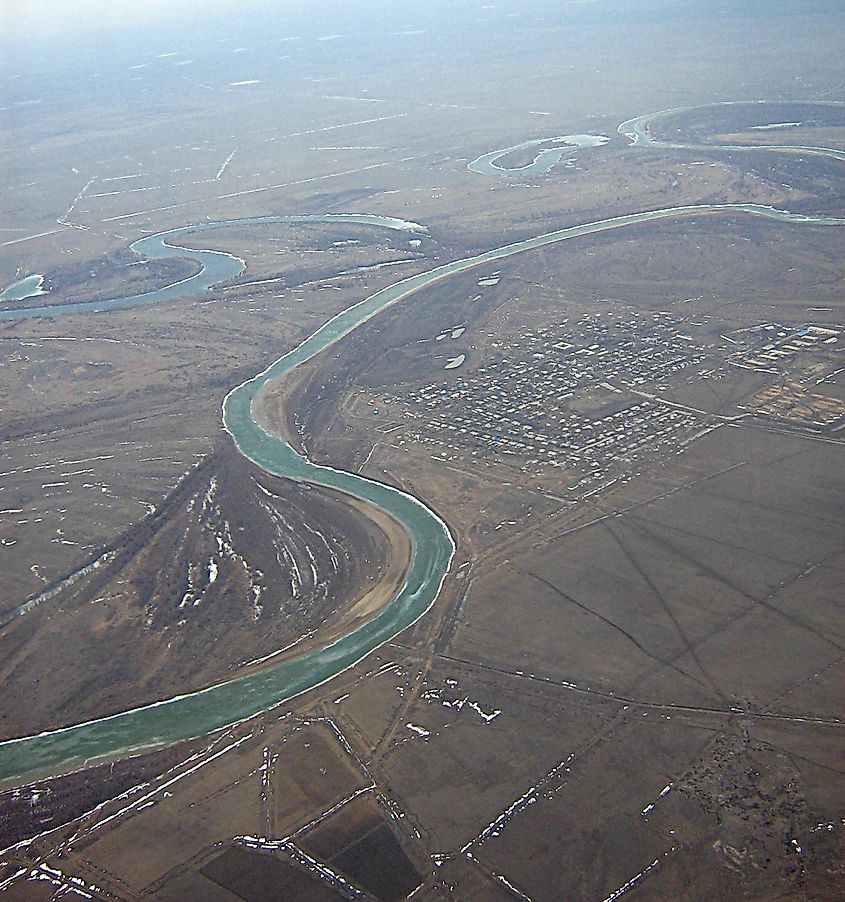
Known previously as the Yaik River until 1775, the Ural River gets its name from the mountain range in which it begins. Starting at the heights of Mount Kruglaya, the Ural snakes its way across Southwestern Russia and cuts across Northern Kazakstan, and is considered part of the boundary between Asia and Europe. The Ural River ends where the Caspian Sea begins. Its basin has an area of 89,000 sq mi (231,000 km2).
Due to its geographical location, the Ural River tends to freeze solid in the winter months, making navigation almost impossible for regular sea vessels. Hydroelectric dams have also been constructed within the Kazakstan portion of the river. The fast-flowing water of the Ural River gives the people within its reach an abundance of energy that is used to power their homes.
The Ural River delta and adjacent Caspian Sea coast have also been declared a Ramsar wetland of international significance. The area attracts many migratory bird species from remote corners of the globe and also has a resident population of many endangered and endemic bird species. Many fish species also migrate from the Caspian Sea to the river upstream for spawning.
4. Dnieper River – 1,367 miles
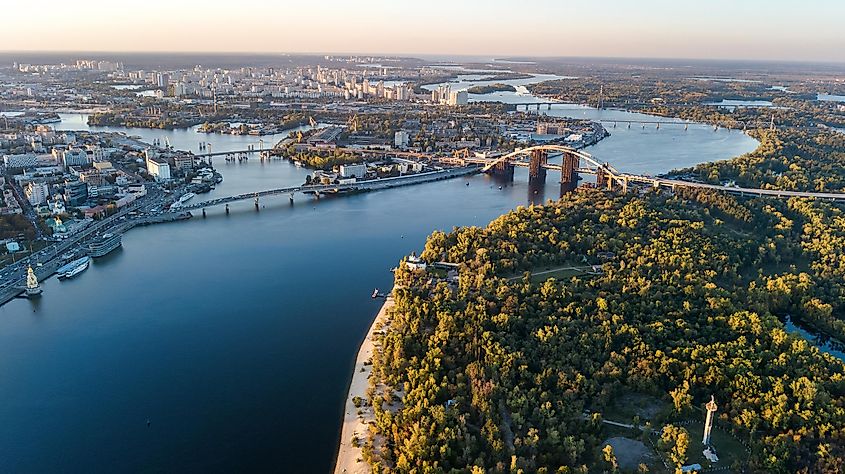
Also called the Dnipro River, the Dnieper River is one of the most noticeable parts of Eastern European geography. Also, owing its origins to the Valadai Hills in Russia, the Dnieper River pushes south through the nations of Belarus and Ukraine, having a basin area of 195,000 square miles (504,000 km2).
The geography surrounding the Dnieper drastically changes as it travels from Moscow toward the Black Sea. Beginning in a heavily forested and hilly region of Russia, the Dnieper ends its journey in the flat grasslands of Ukraine. The Dneiper River floodplain is also a Ramsar wetland hosting several species of flora and fauna.
For millennia, the Dnieper has provided the people of Eastern Europe with a source of water that still plays an integral role in the irrigation of crops and other food. Ukraine's reputation for having some of the most fertile soil in the world can be credited directly to the Dnieper.
5. Don River – 1,162 miles
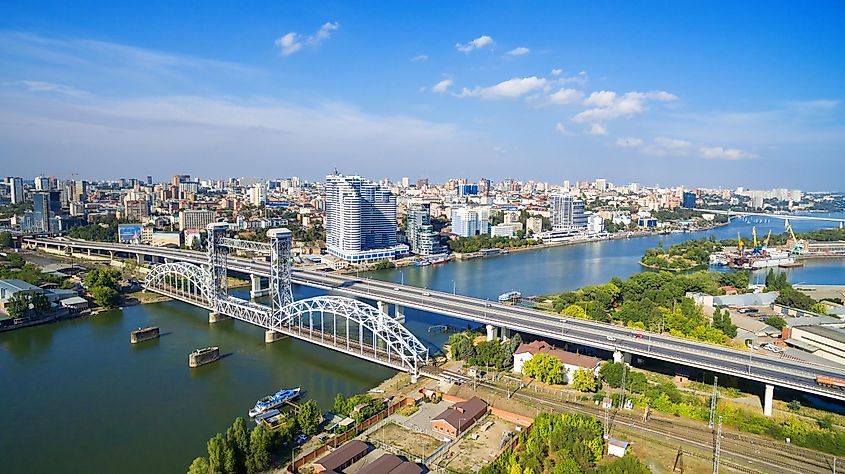
Another Russian behemoth, the Don River, has long given the people of Southern Russia access to the trade opportunities that exist in the Black Sea region. Beginning in the charming town of Novomoskovsk, the Don River rushes through the tranquil Russian countryside until it reaches the Sea of Azov. It has a basin size of 164,300 square miles (425,600 km2).
The Don River has always played a role in Russian history. It was a focal point of the charismatic and ambitious Russian Emperor Peter the Great as well as a base of operations of the famed Don Cossacks. Today the Don River is still just as important as ever, serving as one of the most highly trafficked trade avenues in all of Russia and Eastern Europe.
6. Pechora River – 1,124 miles
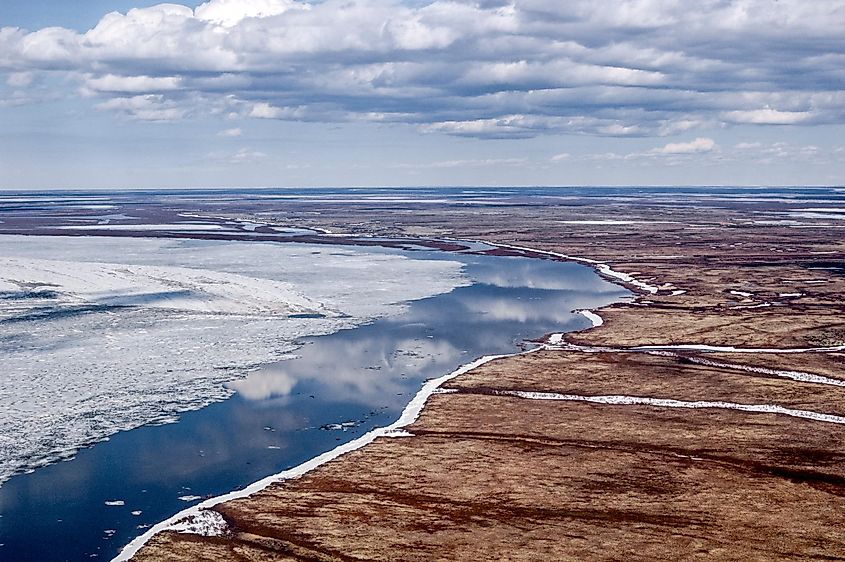
Located in Northern Russia, the Pechora River is not nearly as frequented as other rivers on this list. The harsh conditions and frigid temperatures within its region mean that for much of the year, the waters are frozen solid.
Also stemming from the Ural Mountains, the Pechora River reaches a much more typical steppe landscape only a few miles away from its source, with a basin size of 124,000 square miles (322,000 km2). The Soviet government pondered constructing a canal that would link the Pechora and Kama Rivers together, but it never came to fruition.
Despite its tough location, the Pechora River's basins are a hotspot for natural gases and other valuable natural resources. The Pechora also grant the Russians somewhat easy access to the Arctic Ocean.
7. Kama River – 1,122 miles
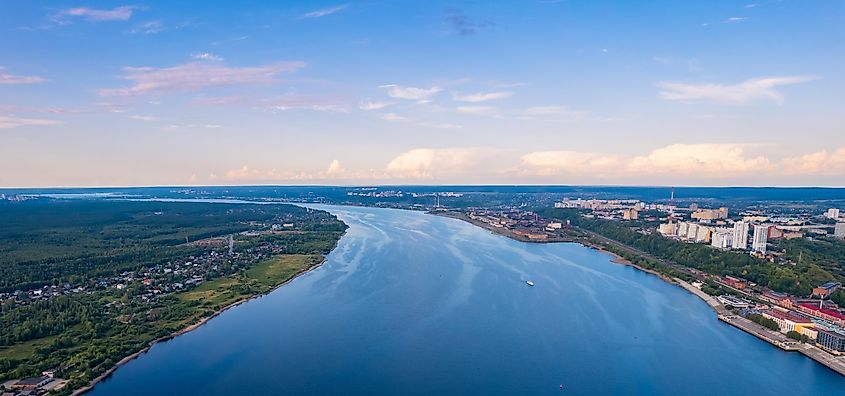
Attached to the much larger Volga River, the Kama River has long been a place of great interest in the eyes of various Russian leaders. Before the invention and eventual construction of railways, the Kama served as an invaluable travel route past the Ural Mountains and into Siberia.
Like many of the rivers that populate Western Russia, much of the surrounding area along the Kama River is flat grasslands filled with farms and other agricultural infrastructure. The river covers a basin size of 196,000 sq mi (507,000 km2). The Kama River is another snow-fed river. It is also known to freeze between December and April. The Kama additionally hosts a handful of invaluable hydroelectric dams at Perm and Nizhnekamsk.
8. Oka River – 932 miles
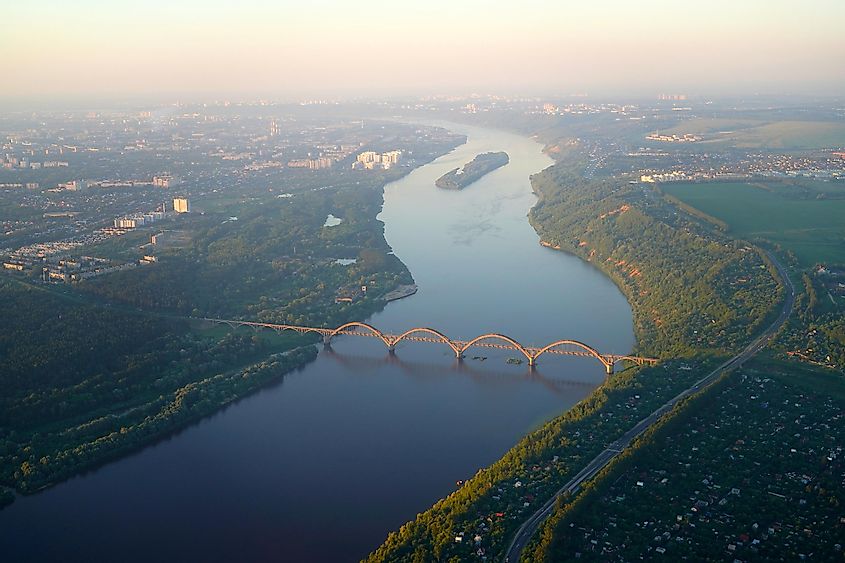
Found in Western Russia, the Oka is yet another tributary of the Volga River. This river begins in the Central Russian Uplands and then winds its way through a series of valleys and hills until it flattens out on the Eurasian Steppe. The river basin has an area of 95,000 square miles (245,000 km2).
From a historical perspective, the Oka often served as a natural border and defense of the Russian people from numerous raids perpetrated by the nomadic horsemen that inhabited the easternmost side of the river. The Oka River is home to some of Russia's most unique and beautiful scenery. The lush grasslands and farms it irrigates make for a peaceful and tranquil backdrop.
9. Belaya River – 889 miles
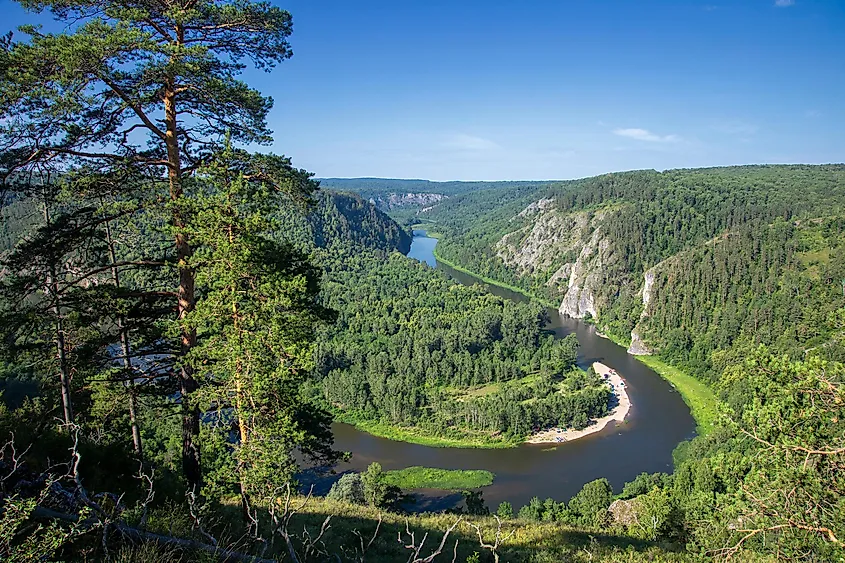
A tributary to the Kama River, the Belaya is often forgotten amongst the other great Russian rivers. However, despite its relatively small size, its beautiful blue water and mountainous shoreline make it one of the most stunning rivers of the bunch.
Beginning in the Ural Mountains, the Belaya River travels through some of the most majestic river valleys in the world. Sharp cliffs and dense forests make up much of the geography around the river, which has a basin size of 55,000 square miles (142,000 km2).
The Belaya has inspired many great art pieces and is still a hotspot for photographers and outdoor adventurers throughout the region. Water sports such as boating and swimming are also common in the flatter and calmer part of the river.
10. Dniester River – 840 miles
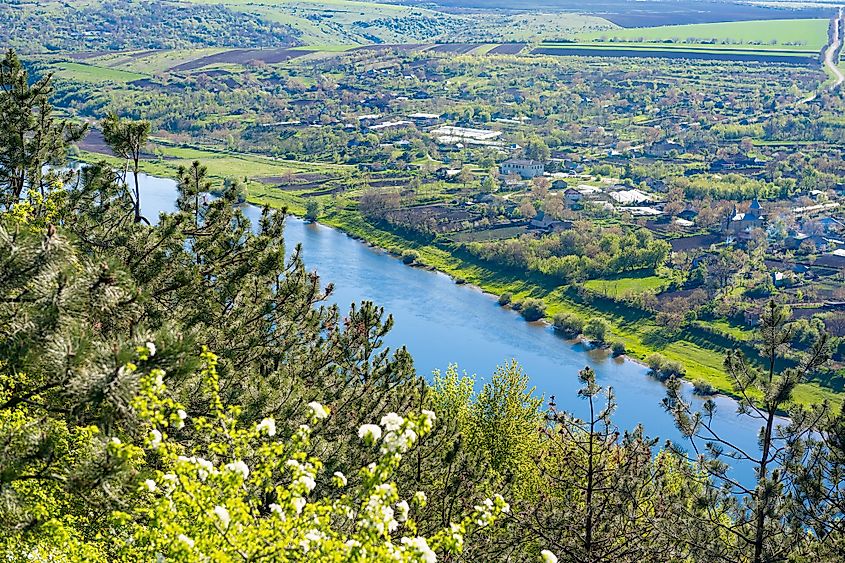
The heart and soul of Moldova, the Dniester River, is the main artery that feeds this small Eastern European nation. Flowing deep into the Molovian hinterland from the Black Sea, the Dniester has served as an integral avenue for trade and travel in this nation.
Originating in the Carpathian Mountains in Southwest Ukraine, the Dniester River flows directly through Moldova, cutting the country in half and covering a basin size of 26,497 square miles (68,627 km2). This waterway gives the people of Moldova both energy and irrigation for vital crops. However, despite its giving much to Moldova, it is also a source of many problems. The Dniester River routinely floods and causes millions of dollars worth of damage each year, making life quite unpredictable for those who live nearby.
The massive waterways that populate Europe are some of the most vital in the world. Travel and trade hinge upon their currents and estuaries. Without access to the global markets brought closer by these rivers, many of the nations in Europe would have drastically smaller economies and standards of living.
10 Longest Rivers In Europe
| Rank | River | Length (in miles) | Length (in km) | Countries |
|---|---|---|---|---|
| 1 | Volga | 2,194 | 3,531 | Russia |
| 2 | Danube | 1,777 | 2860 |
Germany, Austria, Slovakia, Hungary Croatia, Serbia, Bulgaria, Romania, Moldova, Ukraine |
| 3 | Ural | 1,509 | 2,428 | Russia, Kazakhstan |
| 4 | Dnieper | 1,367 | 2,200 | Russia, Belarus, Ukraine |
| 5 | Don | 1,162 | 1,870 | Russia |
| 6 | Pechora | 1,124 | 1,809 | Russia |
| 7 | Kama | 1,122 | 1,806 | Russia |
| 8 | Oka | 932 | 1,500 | Russia |
| 9 | Belaya | 889 | 1,447 | Russia |
| 10 | Dniester | 840 | 1,352 | Ukraine, Moldova |











